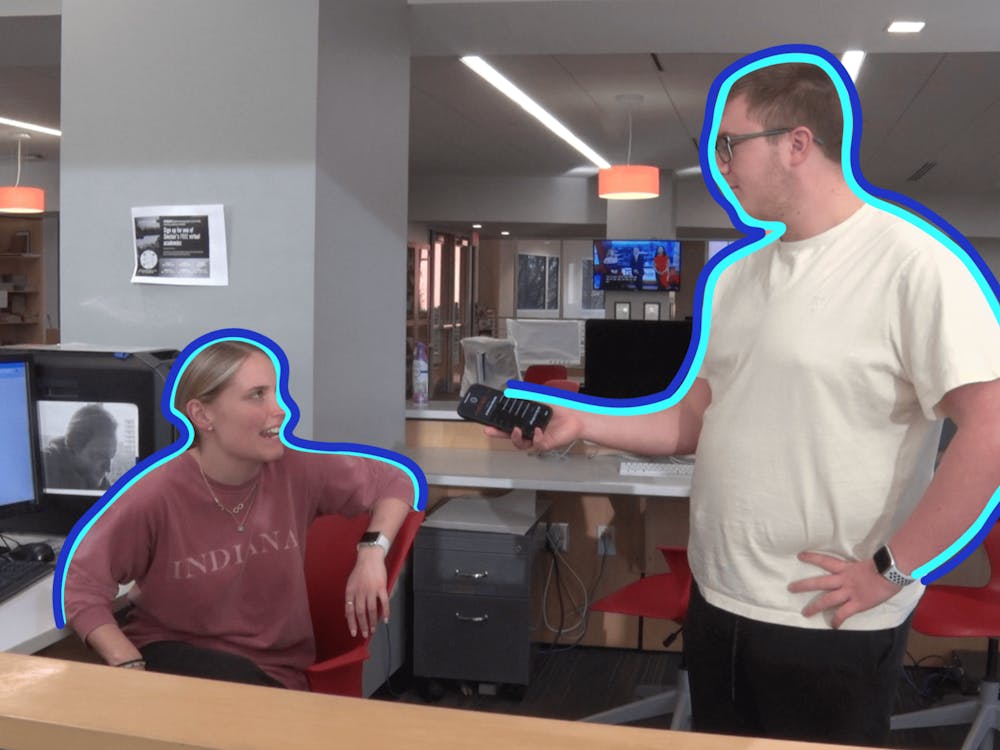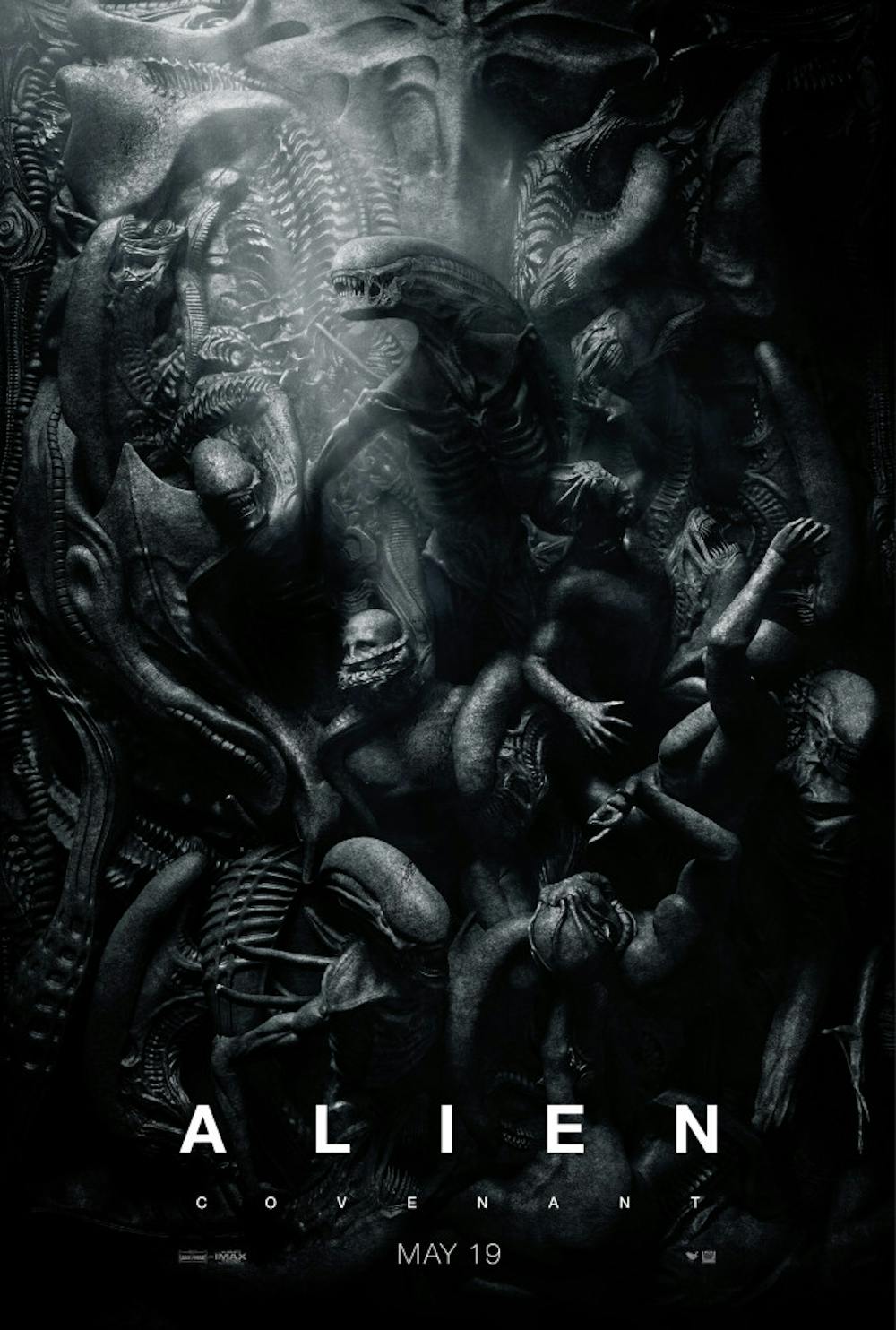by Emily Reuben Ridley Scott’s Alien is widely celebrated for its masterfully terrifying alien creatures paired with a claustrophobic, isolated space environment. The film became popular enough to spawn three sequels, pop culture fame, two crossover films, and a prequel further expanding on Ridley’s alien creatures and sci-fi themes. The recent release of Alien: Covenant is the latest addition to Alien franchise, taking place after Prometheus which was released in 2012. While the franchise began dropping off in quality after Aliens, Prometheus offered much needed hope for an adequate revival for the Alien series. Being the follow up to Prometheus, Alien: Covenant further expands on the revisited Alien universe and further develops the narrative. Sadly, much like Prometheus, narrative is not exactly the film’s strong suit and poor storytelling often leads to more questions than answers.
At least it tried to have a story
Alien: Covenant takes place in the year 2104 as a colony makes its way to a planet known as Origae-6. After an unexpected neutrino burst hits the ship, Walter (Michael Fassbender), a synthetic human being, awakens the remaining crew members from their stasis. The burst results in the death of some of the colonists and human embryos. The premature revival of the crew is further complicated by a cryopod malfunction that ends with the captain being burned alive. This leaves Oram (Billy Crudup), a self-described faith driven man, in charge. Shortly after this chain of events, the ship receives a seemingly human transmission from a nearby planet. Wary of returning to their pods for further stasis, the crew opts to investigate the signal and the planet the transmission spawned from despite the objections of Daniels (Katherine Waterston), Oram’s second in command and widow of the former captain.
A portion of the crew travels to the unknown planet to determine if it can be colonized. Despite the initial Earth-like appearance, something seems concerning about the planet. After a few of the crew members unknowingly discover alien life forms that use humans as living hosts, the expedition begins to take a turn for the worst. It soon becomes apparent that the most urgent need is for the expedition group to leave the planet and get back to their ship in one piece.
While being a relatively straightforward concept, the film also features an overtly obvious villain, horror cliches (no communication signals), and a handful of amazingly stupid characters that are disposable from the get-go. On the upside, Katherine Waterson does an excellent job at playing Daniels, and the character offers the only level-headed, rational advice throughout the film and is also a strong, active female lead, something always welcome in the film industry.
Shortly after this chain of events, the ship receives a seemingly human transmission from a nearby planet. Wary of returning to their pods for further stasis, the crew opts to investigate the signal and the planet the transmission spawned from despite the objections of Daniels (Katherine Waterston), Oram’s second in command and widow of the former captain.
A portion of the crew travels to the unknown planet to determine if it can be colonized. Despite the initial Earth-like appearance, something seems concerning about the planet. After a few of the crew members unknowingly discover alien life forms that use humans as living hosts, the expedition begins to take a turn for the worst. It soon becomes apparent that the most urgent need is for the expedition group to leave the planet and get back to their ship in one piece.
While being a relatively straightforward concept, the film also features an overtly obvious villain, horror cliches (no communication signals), and a handful of amazingly stupid characters that are disposable from the get-go. On the upside, Katherine Waterson does an excellent job at playing Daniels, and the character offers the only level-headed, rational advice throughout the film and is also a strong, active female lead, something always welcome in the film industry.
Looks a little too Earth-like
Before pointing out the massive narrative flaws, it’s important to note that Ridley Scott does an excellent job at creating sci-fi sets. All of the scenes on the space shuttle are great to look at as the characters navigate about. Sadly, not much of the location is utilized in any meaningful way. Most of the film actually takes place on a planet unexpectedly discovered by the crew. The brief exploration of the planet reveals beautiful scenery, but nothing necessarily other-worldly or exciting. The planet is essentially Earth #2 in terms of aesthetic, which while pretty, is boring. The exception to this is a mausoleum-esque structure that the crew takes shelter in. While again not necessarily utilized very well, the location does offer a few impressive visuals such as the hundreds of corpses frozen in time as the crew uneasily passes by bodies reaching out desperately to no avail. The brief glimpse of the alien incubation room was also a nice touch, but again, so little time was focused on it that the location holds no real significance to the film as a whole.
The exception to this is a mausoleum-esque structure that the crew takes shelter in. While again not necessarily utilized very well, the location does offer a few impressive visuals such as the hundreds of corpses frozen in time as the crew uneasily passes by bodies reaching out desperately to no avail. The brief glimpse of the alien incubation room was also a nice touch, but again, so little time was focused on it that the location holds no real significance to the film as a whole.
Where are the aliens?
For a movie with the word “alien” in it, there are surprisingly few aliens. After the initial happenings of the film and losing some crew members, the first half of the film aims to build tension for the audience at a slower pace, which would be understandable if there was any meaningful character development or chemistry. The time devoted to mourning characters the audience is never introduced to is appalling. It’s understandable that Scott would want to showcase the loss experienced by the crew, but this would be more meaningful if the audience was more involved with the characters and situation. The audience is essentially thrown into chaos and expected to feel something, but the audience is never given a compelling reason to care about any of the people dying or the survival of the remaining crew. When aliens finally begin appearing, the initial introduction is almost promising. Witnessing an alien birth itself by destroying a human from the inside is fascinating to say the least, but after the initial birthing, there is little to be desired. The aliens themselves are rendered pretty unimpressively. While there is certainly worse examples of CGI, it’s always disappointing to see the loss of practical effects, especia lly for a franchise that initially utilized them so well. In many sequences, the aliens do not really seem as if they exist at all, which makes the horror aspect of the film drop drastically.
More disappointingly than the time it takes to actually see any aliens is their overall lack of involvement throughout the film. Despite there being a literal chamber full of alien eggs, only one alien is ever shown at a time on screen. This is certainly a missed opportunity for some horrifying effects and death sequences, but alas, one alien effortlessly dismantling a helpless crew member will have to do.
lly for a franchise that initially utilized them so well. In many sequences, the aliens do not really seem as if they exist at all, which makes the horror aspect of the film drop drastically.
More disappointingly than the time it takes to actually see any aliens is their overall lack of involvement throughout the film. Despite there being a literal chamber full of alien eggs, only one alien is ever shown at a time on screen. This is certainly a missed opportunity for some horrifying effects and death sequences, but alas, one alien effortlessly dismantling a helpless crew member will have to do.
Who created these themes?
Obviously the film decided to place more of a focus on the narrative, thematic elements of the Aliens universe rather than offering a horrorfest of extraterrestrial madness. What’s strange about this is the inclusion of faith throughout the dialogue. When Oram is given the role as captain, he notes that he was initially not given the position due to his faith. This is odd considering that his first speech features Oram asking the crew to run tests to prevent another catastrophe from occurring, but the rest of the crew simply states that “these things happen”. This example shows Oram as the more practical one, while his crew is more accepting of the “inevitable”. Here he is definitely the most efficient member of the crew, but directly after this scene he reveals he is a “person of faith” and the film does a complete 180, demonstrating Oram is incapable and impractical. Even more perplexing is the fact that despite Oram’s assertion that he is a faithful person, not once does he demonstrate that statement in practice. So what’s the point? This theme is tied together with that of creation, specifically through scientific means. Two characters are synthetic humans created to help colonists expand. Through these characters, the subject of artificial creation is explored, typically in conjunction with the theme of faith. Walter’s declaration of faith is in direct contrast with the synthetic human’s belief in experimentation and synthetic creation. Ultimately, Covenant seems to showcase the fragility of creation in a broad sense, demonizing the thought process of the synthetic beings while simultaneously demon strating the fragility of life.
While these themes are commented on, they aren’t necessarily discussed in an important manner; they’re just kind of dropped into the narrative without any true statement being made. These ideas are secondary to everything else happening onscreen and only serve to narratively enhance a few select characters. Because of this, the overall message of the film seems tacked on and not fully developed.
strating the fragility of life.
While these themes are commented on, they aren’t necessarily discussed in an important manner; they’re just kind of dropped into the narrative without any true statement being made. These ideas are secondary to everything else happening onscreen and only serve to narratively enhance a few select characters. Because of this, the overall message of the film seems tacked on and not fully developed.




















